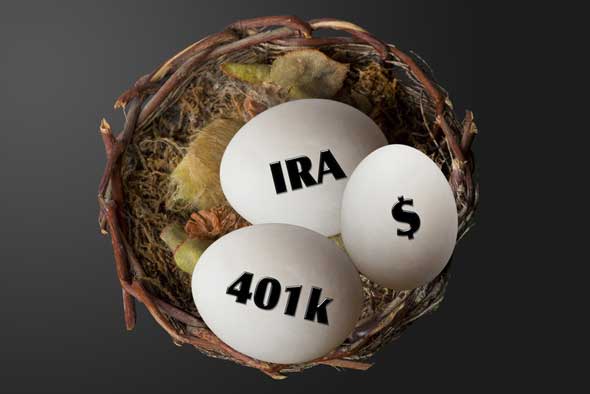How much do parents’ assets affect FAFSA? Parental assets may have some impact on financial aid eligibility, depending on the type of asset, but significantly less impact than student-owned assets.
Need some help paying for college? The first thing you need to do is to file your Free Application for Federal Student Aid (FAFSA). Worried that you won’t qualify for aid? Even parents and students who have some savings may still be eligible. Colleges and universities use the information from your FAFSA and federal tax return to calculate your Student Aid Index (SAI). However, not all funds are treated equally.
Read on to get a better idea about how much you might be eligible for!
FAFSA and Assets: What does FAFSA Look at?
It’s important not to declare unnecessary assets on your FAFSA form, as this error could cost you dearly in financial aid. Knowing which assets are counted by FAFSA and which are not may also allow you to shelter your assets in order to maximize financial aid eligibility.
What affects FAFSA when it comes to assets held by either the student or their parents:
- Equity in investment real estate (but not your primary residence)
- Cash in savings/other bank accounts
- UGMA/UTMA accounts
- Certain types of businesses, such as those with 100 or more employees, or part-ownership of businesses that are not majority owned and controlled by the family
- Stocks and bonds
- Mutual fund assets
- The value of 529 plans and Coverdell ESAs
- Commodities
- Cash gifts to students, which are counted as student income
Assets that are not counted by FAFSA when determining your SAI include:
- 401(k) and Roth and traditional IRA accounts (though withdrawals from Roth IRA accounts will be counted as untaxed income)
- Cash values of whole life insurance policies and qualified annuities
- SIMPLE, KEOGH, and pension plans
- Annuities
RELATED: Estimate your financial aid eligibility here
Do Parents’ Assets Affect Financial Aid?
Both parent and student-owned assets can have an impact on financial aid eligibility. However, generally-speaking, parent assets have a more limited impact because parents are expected to contribute a smaller proportion of their wealth to pay for their child’s college education. The SAI assumes parents should use up to 5.64% of their unprotected assets (those assets counted by FAFSA) to help their child pay for college. Furthermore, the FAFSA formula protects a portion of parents’ non retirement assets, so these may have even less of an impact.
This also depends on the type of asset. For example, real estate investments, UGMA/UTMA accounts, mutual fund assets, and 529 plans can reduce the amount of aid you’re eligible for, while protected parent assets like 401(k) and Roth IRA accounts will not have any impact. You may also be wondering if your parents’ savings account will affect your financial aid, yes it may, as cash savings are also counted on FAFSA when calculating your SAI.
How Much do Student Assets Affect FAFSA?
Do student assets affect FAFSA? Generally speaking, yes.
In fact, students are expected to contribute a higher proportion of their assets, up to 20%, to pay for their own college education. Therefore, student assets typically can have a greater impact on financial aid eligibility than their parents’ assets.
7 Common Assets and How They Affect Financial Aid Eligibility

1. Retirement accounts
- The good news: The value of your 401(k) and Roth and traditional IRA accounts are not counted at all when determining your SAI.
- The bad news: Although you can take a penalty-free withdrawal from a Roth IRA to pay for college, the entire amount you withdraw will count as untaxed income on the FAFSA*.
- When computing SAI, as much as 50 percent of income can be considered available funds to pay for college. Remember: higher SAI means less financial aid eligibility!
RELATED: Which is best? 529 plan or Roth IRA?
*Beginning in the 2017-18 school year, the FAFSA started using prior-prior year’s income as ‘base year’ income

2. Equity in your home
- Home equity is the difference between the market value of your home and the amount you owe on it.
- This amount is NOT counted as an asset on the FAFSA, but it is included on the CSS Profile form, which caps it at 2-3 times income.
- Home equity in investment real estate, such as a second home, does count on both the FAFSA and the CSS Profile.
- When calculating the net worth of an asset, you can subtract only debts that are secured by the asset. So, if you used a home equity loan on your principal place of residence to buy a second home, the full value of the second home must be reported as an asset on the FAFSA. The home equity loan does not offset the market value of the second home, since the home equity loan is secured by the principal place of residence and not the second home.

3. UGMA/UTMA accounts
- Custodial accounts are considered a student’s assets on the FAFSA.
- 20 percent of a student’s assets are counted on the FAFSA, 25 percent are counted on the CSS Profile.
- Any interest, dividends or capital gains reported on the student’s income tax return is also counted as income on the FAFSA and assessed at 50 percent*.
*Since the 2017-18 school year, the FAFSA uses prior-prior year’s income as ‘base year’ income

4. Family-owned businesses
- The value of your family business is not counted on the FAFSA when:
- More than 50 percent of your business is owned and controlled by your family, AND
- There are less than 100 full-time or full-time equivalent employees

5. Value of insurance policies and annuities
- Cash values of whole life insurance policies and qualified annuities are not reported on the FAFSA.
- However, non-qualified annuities are counted as assets on the CSS Profile, a form used by many schools to determine non-government aid eligibility.
- Keep in mind that there are also a number of other important differences between the FAFSA and the CSS Profile.
RELATED: 15 facts about financial aid eligibility

6. Mutual fund assets
- The value of a mutual fund will count as an asset on the FAFSA.
- Distributions from a mutual fund to pay for college will count as income on the FAFSA*.
- Dividends and capital gains that are reported on Form 1040 will also be counted as income on the FAFSA.
*Since the the 2017-18 school year, the FAFSA uses prior-prior year’s income as ‘base year’ income

7. 529 College Savings Plans and Coverdell ESAs
- Funds in 529 plans and ESAs owned by a dependent student or one of their parents are counted as parental assets on the FAFSA.
- Only up to 5.64 percent of a parent’s assets are considered available funds to pay for college, compared to 20 percent of a student’s assets.
- Withdrawals used to pay for college are not included on the FAFSA.

 {{parent.title}}
{{parent.title}}
 Login
Login




